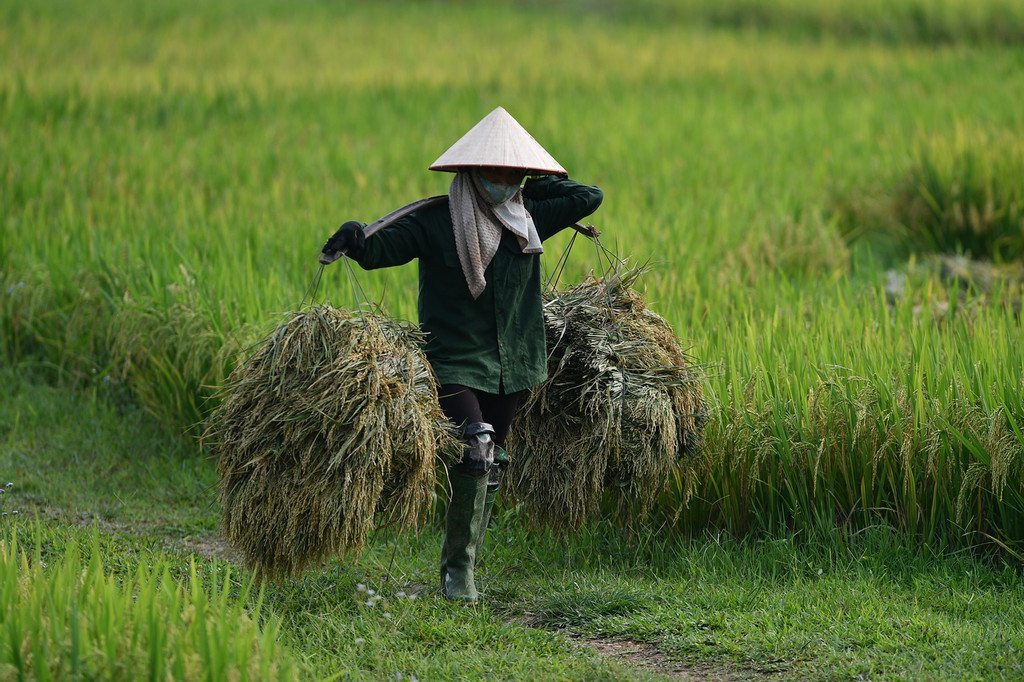
Hoan, speaking with VietNamNet, emphasized the need to shift to green agriculture and reduce emissions. He said it is always difficult to make changes, but it would be even more difficult to not make changes.
You have recently many times mentioned the concept ‘green agriculture’. What will happen if our agriculture is not green?
With green agriculture, the world is striving to recover the natural ecosystem. This aims at not only producing enough food for humans, but also protecting the land to keep it fertile for our next generations.
Shifting to green agriculture means we are doing what our ancestors did, but with a new approach.
As climate change is getting more severe, green agriculture and green economy require the whole world to change its awareness. If we continue to follow the old agricultural production model, agriculture will create carbon, greenhouse effects and cause climate change. And climate change will have irreversible impact on agriculture.
The two-way effects can be solved only by green agriculture, because green agriculture targets the things most friendly to the environment. It won’t adversely affect natural resources and greenhouse effects.
There are many green agriculture models invented. Farmers have gradually adapted to be ‘in accord with nature’ models, which can protect the environment and mitigate emissions.
The government has approved a plan on sustainably developing 1 million hectares of high-quality low-emission rice associated with green growth in Mekong Delta by 2030. We now can also collect money from carbon credits. Could you please tell us about the achievements gained over the last year when agriculture began going green?
Before talking about the 1 million hectare rice project, let’s talk about the models which are smaller in scale, but are also ‘green’.
The rice-shrimp cultivation model in Ca Mau is one of them. Previously, people could only till rice, but today they can both cultivate rice and hatch shrimp right in the rice fields. This is a kind of environmentally friendly farming which reduces the costs for fertilizers and water, with no need to use plant protection chemicals.
Another model is the rice-clam worm model applied in Hai Duong, Hai Phong and Thai Binh. This is a circular agriculture and green agriculture model.
This shows that the rice-shrimp, rice-fish and rice-clam worm can help reduce greenhouse gas emissions.
In the Central Highlands, at coffee farms and orchards, instead of burning by-products which generate greenhouse effects, farmers now cut by-products into small pieces to create biological fertilizer for crops.
These are exactly the models of the agriculture in the future which need to be developed. The models also show that it is not difficult and not too costly to develop green agriculture.
Rice cultivation requires much water, fertilizer and plant protection chemicals. Abusing the chemicals will affect the environment, create greenhouse effects, increase production costs and reduce rice quality.
The project on developing one million hectares of high-quality rice aims at ‘green rice – healthy life’. Farmers follow a standardized farming process, including varieties, cultivation, inorganic fertilizer reduction and reasonable watering. This will not only generate high-quality rice, but also large fields for selling carbon credits.
The Ministry of Agriculture and Rural Development (MARD) has reported to the Prime Minister about the signing of documents on successfully transferring 10.3 million tons of CO2 to the World Bank and earning VND1.25 trillion.
Vietnam’s rice in particular and Vietnam’s farm produce in general are positioned in the world market as clean and green products, farmed in accordance with the process recognized by international organizations.
In Europe, products are classified and labeled as green products. If we don’t follow green process, our products will have other selling prices.
Nowadays, customers don’t buy products, but are concerned about the methods to create products, and even buy the culture of production and the culture of businesses.
We are gradually moving towards low-emission agriculture. What policies and solutions do we have to apply to step up to a green agriculture?
MARD is building a new set of criteria for agricultural production. In rice export, for example, we need criteria about the percentage of green rice.
It is not easy to change a habit or a way of thinking, but it is a must.
Tam An